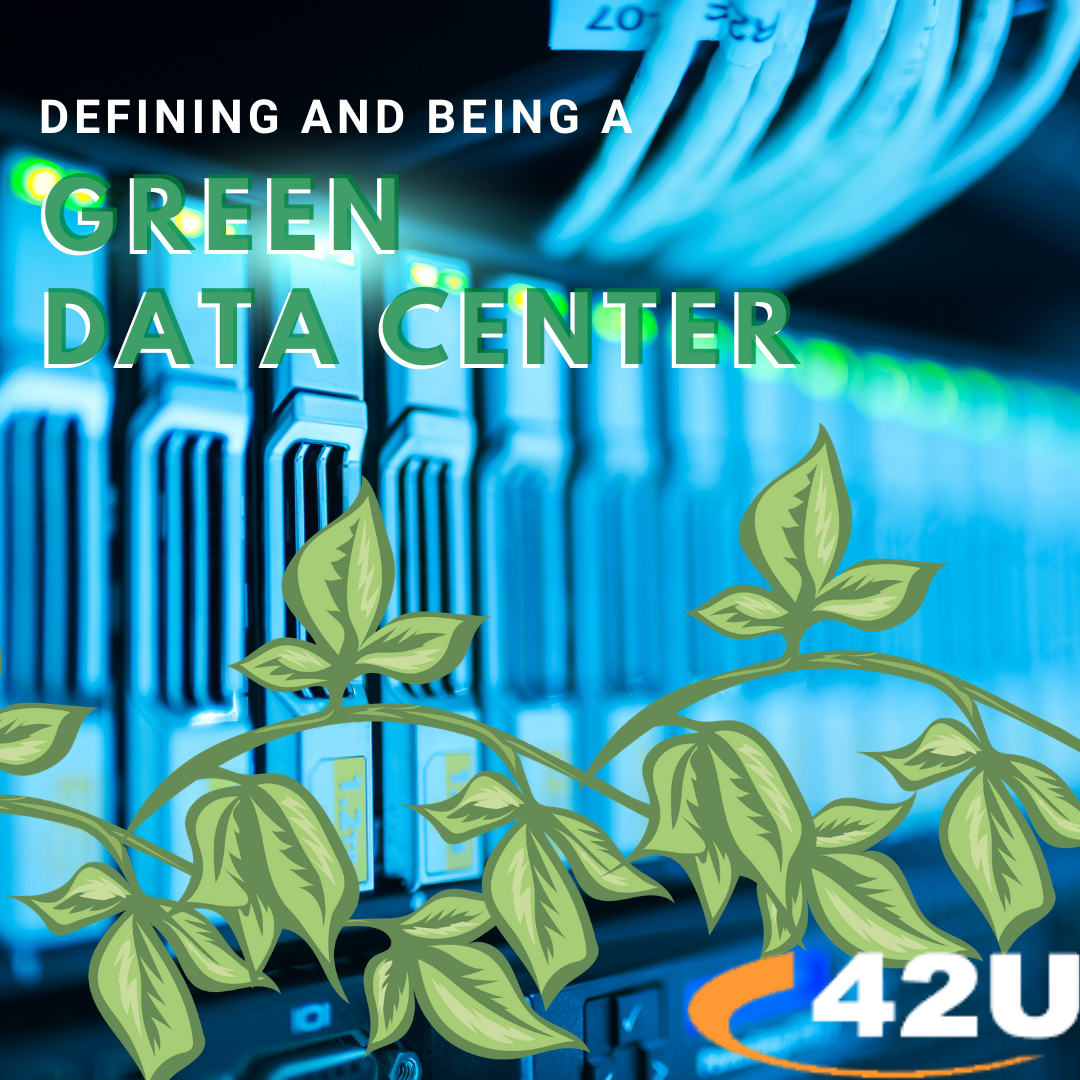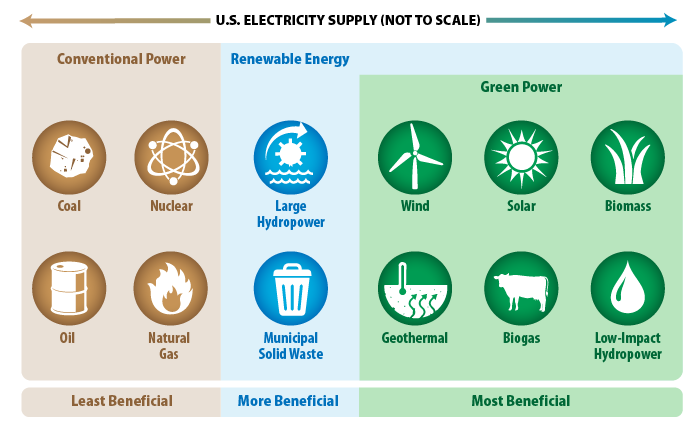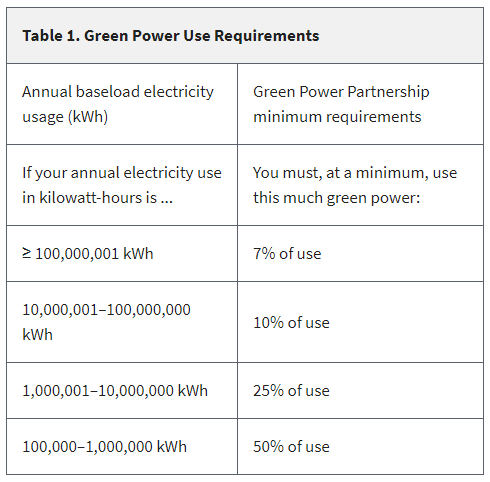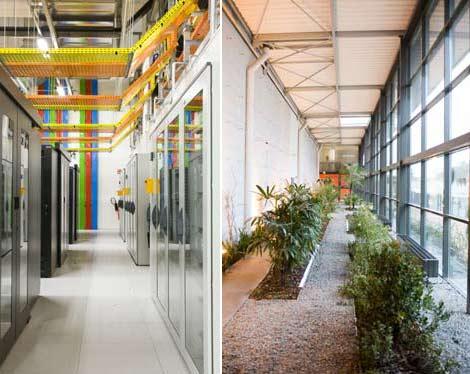
Many Data Centers focus on being green and eco-friendly. There are some who create their own initiatives then there are others that meet certain loose standards for being a certified green data center.
Hearing ‘green’ as a phrase for energy consciousness has been used and abused somewhat through the years so let’s first step back and review what these words are actually supposed to mean.
Defining Green
We’ll be using the EPA’s definitions moving forward. These delineate between conventional power, renewable energy, and green energy, that means the definitions create a light taxonomy indicating a larger goal.
Conventional power includes the combustion of fossil fuels (coal, natural gas, and oil) and the nuclear fission of uranium. Fossil fuels have environmental costs from mining, drilling, fracking or extraction, and emit greenhouse gases and air pollution during extraction, combustion, and distribution. Although nuclear power generation emits no greenhouse gases during power generation, it does require mining, extraction, and long-term radioactive waste storage.
Renewable energy includes resources that rely on fuel sources that restore themselves over short periods of time and do not diminish. Such fuel sources include the sun, wind, moving water, organic plant and waste material (eligible biomass) via burning the material as you would wood or coal, and the earth’s heat (geothermal). Although the impacts are small, some renewable energy technologies can have an impact on the environment. For example, large hydroelectric resources can have environmental trade-offs on such issues as fisheries and land use.
Green power is a subset of renewable energy and represents those renewable energy resources and technologies that provide the highest environmental benefit. The U.S. voluntary market defines green power as electricity produced from solar, wind, geothermal, biogas, eligible biomass, and low-impact small hydroelectric sources. Customers often buy green power for its zero-emissions profile and carbon footprint reduction benefits.
You can see the goal further illustrated with their U.S. electricity supply breakdown from least beneficial to most beneficial.

Beyond the Definition
Another great aspect of understanding the EPA’s green initiative is that you can be certified within their Green Power Partnership Requirements program. This requires a certain percentage of your energy use being classified as green respective to the total power consumption. Oddly the more you use the less percentage needs to be green. As it’s a US certification your power also needs to originate within the country. If you believe that you will meet their requirements it can be worth going to the process because customers will appreciate the accommodation from such a credible source.

Green Energy From the Data Center to the Community
While green energy tends to be a dry topic like anything, it quickly becomes more interesting when you dig into the details. Data Center Knowledge has provided us with a great list of interesting usages of green energy, primarily helping their community.
A fascinating example is from Telecity Paris Data Center who is using excess heat production as a green room.

Excess heat from servers at the new Telehouse West data center in the Docklands section of London will soon be used in nearby houses and businesses. The waste heat from the $180 million Telehouse colocation facility will be used in a district heat network, which is expected to produce up to nine megawatts of power for the local Dockland community.
An IBM data center in Switzerland is being used to heat a nearby swimming pool. Hot air generated by the Uitikon center will flow through heat exchangers to warm water that will be pumped into the nearby pool. You can read more about that setup here.
Waste heat from a data center in Finland underneath Uspenski Cathedral will warm up water pipes and channel it to nearby homes from heating. The planned data center for information technology services firm Academica would be capable of providing enough heat to warm up 500 large private houses.
A data center built by IBM and Syracuse University uses gas-powered microturbines to generate on-site power. During the winter, the 585 degrees F (307 C) exhaust from the microturbines flows through heat exchangers to produce hot water, which is then piped to a nearby office building to be reused in the building’s heating system.
The Notre Dame Center for Research Computing has placed a rack of high-performance computing (HPC) nodes at a local municipal greenhouse, the South Bend Greenhouse and Botanical Garden, to help heat the flowers and plants in the facility.
Quebecor channels excess heat produced by servers at its data center in Winnipeg, Canada to the nearby offices of a local newspaper. The company ran a second duct out of the exhaust plenum to the intake duct of the editorial office upstairs. The process was controlled by pneumatic baffles that open and close depending on readings of thermometers within the ducts.
Data Centers Being Green First
One data center company has gone so far as to brand themselves as Greenhouse Ecological Datacenters. Despite their name, most of their advertising on their webpage focuses on what you’d expect any data center to focus on. Topics like colocation, uptime, various services, how secure they are, ect. Do not take this as downplaying them in any way. Given their name you’d think they would focus on how they set themselves apart ecologically.
When you make it to their about us page, you see a line item about being ecological. “Ecological – PUE value 1.15; adiabatic cooling; ISO 14001 certified.” It’s nice to see them point it out; however, this highlight seems well within what several other datacenters might point to as ecological concerns often come up with customers considering data centers.
Greenhouse Ecological Datacenters is a great option for housing your data if you are in the Netherlands. What is interesting in highlighting them gets to the core of advertising green in our industry as in any industry.
Advertising Green
While it’s great to cap or put a limit on how much ecological impact a data center makes, in truth advertising green is more about feeling good about doing what many consider to be the right thing than making a true ecological impact. While it’s pushing people in positive directions as an industry, we in the server solution market have seen a stagnation of progress.
The green movement that really sprang forward in the 1990s allowed us to consider environmental needs while making business considerations which was a huge step forward. EPA certification was a great signifier of being more eco-conscious, but as mentioned earlier it’s confusing that those who consume exponentially more energy require a smaller percentage of green energy to meet their standard. Allowing the largest data centers to only use 7% of green energy to meet their certification shows that we need to refresh and renew how we think about ecological considerations.
Now more pragmatic solutions are being sought out that will include more focused goals; such as making energy draw to a datacenter completely carbon neutral.
You will be hearing more from 42U about carbon neutrality as developments with the topic become reality.




